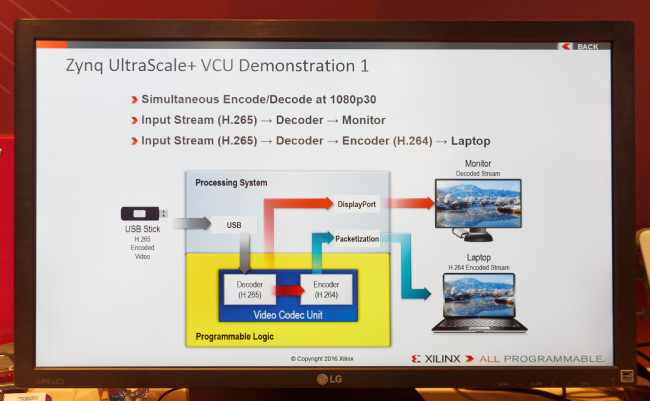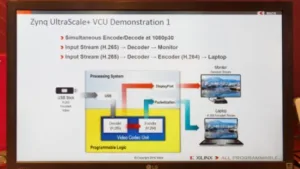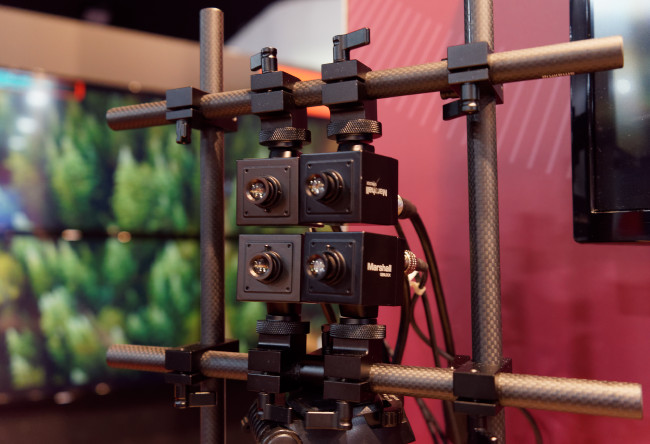Xilinx didn’t seem sure they wanted to talk to us, but when they decided that we might know something about video compression and FPGAs, they seemed to change their minds! At the show, the company was showing its Zynq G2 technology. As we have previously reported, Xilinx FPGAs are a mixture of programmable and fixed elements. At the show the highlight was that the dedicated hardware for compression and decompression was being shown working on 4K60 content with simultaneous coding and decoding, which, of course, means that the chips can be used for transcoding. They can support 8K at 15fps in H.265 in 4:2:0 or 4:2:2 and with 8 or 10 bit grey scale.

At the show, resolutions up to 4K30P were being shown, but had a little more time been available, 4K60P would have been shown. The company was also showing support for codecs such as Tico and the firm’s FPGAs are being used in applications such as KVMs, surveillance and medical, where different trade offs between latency and quality could be traded off.
There is a development kit available that supports a range of different display interfaces including SDI and MIPI as well as supporting sending video over ethernet. The company highlighted that one of the advantages of its FGPAs is that they can be field upgraded to support variations and new features. On the booth, Omnitek, a partner of Xilinx, was showing its warp and blend technology which is now FGPA-based. This kind of processing has been available before, but typically has been based on GPU technology, which has penalties in terms of power and cost. The firm is seeing a lot of interest in serious processing of images from multi-camera arrays and for 360 degree videos.
Omnitek also has image enhancement cores that can deal with high ambient conditions, edge detection and colour correction.
Xilinx told us that a number of companies are working with its 4K toolbox on solutions for HDR compatibility and conversion.


